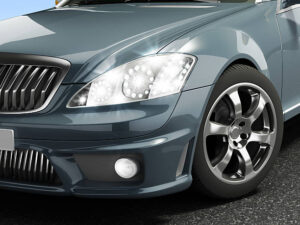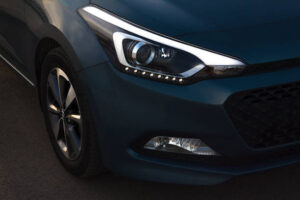The Reason the Beam Pattern Is Important to H7 Bulb Performance
Headlights are more than the eyes of a vehicle; they are the rhythm of the road safety when the night comes. It does not matter whether you are driving down a twisting alpine pass or clowning about on a wet highway or sneaking through suburbia at night; you need the h7 bulb as a key to stay in the picture. However, what is it that makes a h7 bulb be more efficient or visible than the other? The magic is the beam pattern or how the bulb spreads and concentrates its light along the road.

Ask anyone and they will come up with a surprise that the majority of the drivers do not delve into the science on why two H7 bulbs (even those of the same shelf) can operate worlds apart. That is where the fun comes in and that is also where a bit of knowledge makes the nights much much safer and bright.
Devil in Plotting Jukes
There is no need to beat around the bush, the headlight beam patterns have a disproportionately large influence on your driving process. Imagine this: an H7 bulb is spraying its light like the garden hose. When the water is sprayed all over the place, then your plants will not be watered adequately. The same goes with bulbs: when a bulb casts its beam in a haphazard, sloppy manner, you will get countless dark spots, wasted energy, and rather little light in the exact spot it is needed.
The formation of a good beam pattern is such that a focused beam of light with a sharp source is projected on the road but the dispersed beams do not cause blinding to the oncoming drivers. It has to have some cut-off–so the street lamp illuminates the roadway in front, and does not flood the trees or street signs.
What you find in the H7 Bulb, Halogen vs. LED
Now, we break tradition and we rehearse a simple story. Picture two cars going down a forest road: one is an old-fashioned halogen H7, the other is a fancy LED arrangement. Who has longer vision? Which one can see a deer diving out of the roadside?
Halogen H7-The Old Faithful
The Halogen bulbs are the cash cow of the industry that spans over decades. They employ a tungsten filament and it is placed inside a halogen gas-filled chamber. As soon as you turn them on the electricity heats up the filament which makes it glow.

Advantages:
- Rapid and repeatable light.
- It is cheap to change-nearly everywhere.
- Trustworthy design, tested by the millions of vehicles.
Drawbacks:
- Reduced efficiency: Greater energy is converted to heat rather than the light.
- Short life: normal life about 500-1,000 hours.
- The color temperature tends to be yellowish (3200K), but not quite daylight.
Here is the rub. Through their engineering, Halogen bulbs cannot provide a sharp beam easily. They cannot jam all their lumens (the brightness) into a small bundle with their filaments so edges tend to have some spread or fuzz.
LED H7- The new challenger
Let us look at LED H7 bulbs now. Rather than easily broken filament you now have tiny diodes which radiate a photon upon activation. LEDs can be made and disposed with high-quality accuracy.
Advantages:
- More efficiency: less energy is wasted. More value to penny on the brightness scale.
- White light: Often 5000K to 6500K, and therefore more like daylight.
- Life time: More than 20,000-30,000 hours is not uncommon.
Drawbacks:
- Characteristic: it is normally more expensive than halogen.
- Compatibility: Not all housings are co-operative with retrofits.
- Thermal management: And this is ironical because LEDs actually require thermo-managements to maintain the tick potential of electronics.
And here is why the LED bulbs will usually beat the halogen ones: their chips can be positioned right where they want them, just like it was with the filament to produce a concentrated and controlled beam. Less dispersion, more concentration.
Why Beam Shape and not Raw Lumens
Do not be distracted with marketing hogwash on lumens. A bulb may be advertised with dazzling numbers on the box, however; unless the beam pattern of said bulb has been calibrated to fit the headlamp housing that it is fitted to, then all of that power will have gone to waste– the bulb can simply light up the clouds.
A study conducted by the Society Of Automotive Engineers revealed that your road range and your ability to detect obstacles depends directly on the degree to which a bulb displays the beam pattern that it is supposed to.(fidelity of the beam pattern) Your pupils will relax with a focused beam. Things come to perception quicker. Summary fields are lit to an appropriate degree to trigger rapid and secure responses. Stray light? Reserve it to disco balls.
The Results and Facts in the Real World
So what are the numbers. The regular halogen H7 marvel gives 1200 to 1500 lumens. LED H7 upgrades officially claim anywhere between 2000 and 6000 lumens but not all of it makes it to the road. The practical benefit is that LEDs control light to deliver more of it where it is required, normally with a crisper cut-off.
According to drivers, up to 40 per cent more useful light is provided by changing similar-wattage halogen to LED in total light comfort, with the caveat that LEDs must be well suited to the reflector or projector geometry. It entails that earlier recognition of pedestrians, wildlife, or potholes.

What to Do Before Swapping Bulbs: Good Advice
Do not just pick the sparkling box in the store. That is the real thing:
- Bulb to Housing: What ever you purchase needs to fit your particular H7 socket and headlight assembly of your car.
- Look at the Law: There are laws that prohibit some LEDs that are too bright to be implemented in the streets.
- Mind Compatibility: Some bulbs get along well together and some get along definitely not as well as those who do. This is determined by the electrical system of your car and the style of your headlights.
A little bit of due diligence such as reading real-world reviews and compatibility tables can save one a lot.
The Hush-Hush: Beam Patterns are the real MVPs
To conclusion, the level of efficiency in any H7 bulb (whether it is halogen or LED-based) does not rely much on raw wattage or color specifications; instead, it rides much more on the match between its beam pattern with the person car headlight system.
Just imagine that your headlights are a flashlight. You want to see the beam clear, bright and exactly where you look. Halogen disperses the light in a wider manner and with less focus. When they are well designed and installed, LEDs focus all the brightness where it is intended to go.